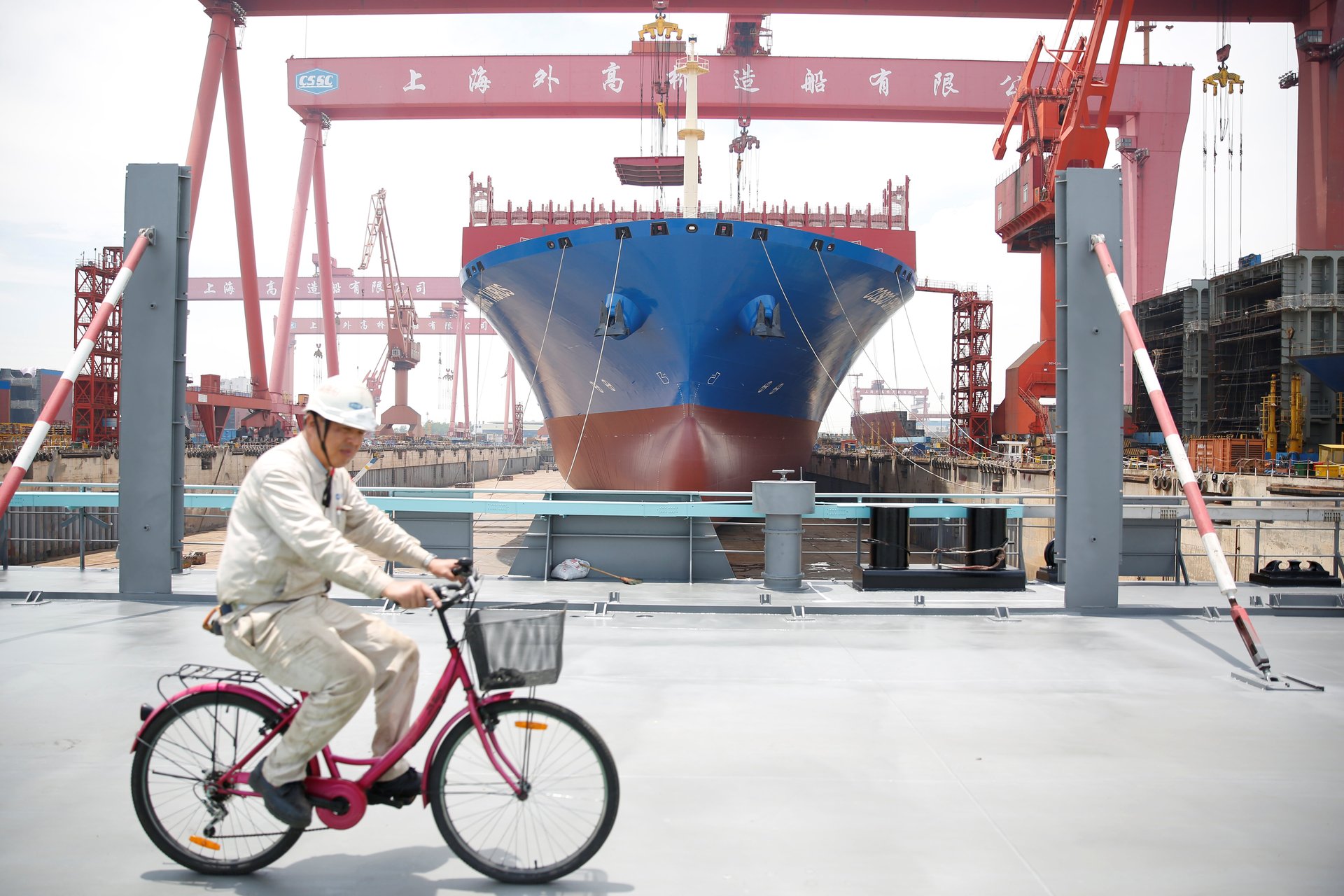The first made-in-China cruise ship was made mostly with foreign technology
By one metric, the newly launched 2,800-cabin vessel is only 30% Chinese

China kicked off the new year with the maiden voyage of its first domestically built large cruise liner. State media outlets hailed the feat as a “major milestone” for the Chinese shipbuilding industry.
Suggested Reading
Less prominently discussed is the fact that the 135,500-metric-ton Adora Magic City is heavily reliant on foreign technology—in much the same way that critical components and systems in China’s first domestically built passenger jet are sourced from foreign companies.
Related Content
Made in China...but only 30% so?
Chen Gang, chief designer and general manager at state-owned CSSC Shanghai Waigaoqiao Shipbuilding Co., which built the luxury vessel, told a Chinese media outlet that the Adora Magic City has a localization rate of less than one-third.
Of the 110 general contracting suppliers that CSSC Shanghai Waigaoqiao worked with, only 30% were Chinese companies paid in yuan, Chen told Car Caijing (link in Chinese), a transportation-focused blog run by the business news magazine Caijing.
He noted that the figure is a rough estimate, given that the currency in which various contracts are settled doesn’t directly reflect where a component or technology is produced.
Italian design and interiors
From the beginning, China’s first made-in-China large cruise liner was to be built with foreign help.
In 2015, state-owned conglomerate China State Shipbuilding Corp. signed a joint declaration (link in Chinese) on developing China’s cruise industry with US-headquartered cruise operator Carnival Corp., Italian shipbuilder Fincantieri, and international shipping classification group Lloyd’s Register.
The statement noted that Fincantieri, one of the world’s largest shipbuilders, would be responsible for the design of China’s first homegrown cruise ship. In 2016, Fincantieri and CSSC formed a joint venture to serve as the “prime contractor” for two vessels to be built in China.
Through that alliance, Fincantieri licenses its ship model platform technology and provides technical services to CSSC Shanghai Waigaociao, including project and supply chain management.
Meanwhile, the Adora Magic City’s 2,800 cabins are fitted out by Marine Interiors, a unit of Fincantieri.
Swiss propulsion system
The Chinese luxury cruise ship runs on a propulsion system provided by ABB, the Swiss engineering and technology group.
Under its contract with CSSC Shanghai Waigaociao, ABB also provides electricity generators, main switchboards, distribution transformers, and a propulsion control system, according to a 2019 statement announcing the deal. CSSC said it chose ABB for its “unparalleled know-how of the cruise market.”
Finnish automation and control systems
For systems critical to operating the Adora Magic City, China turned to Finland’s Wärtsilä.
The Helsinki-headquartered maritime propulsion company provided the Chinese ship with several technologies, including an “automation and control system, valve control system, low location lighting, navigation system, engine and bridge control room console, and smart motor control unit.”
The ship’s bow thruster, which helps improve maneuverability, and its trim system, which controls a boat’s pitch and heel, are also sourced from Wärtsilä.
“Bringing in, going out”
The high proportion of foreign technology in China’s first domestically built cruise ship may not be quite the “gotcha” that it first appears.
In fact, it aligns with Beijing’s well-tested strategy of convincing foreign companies to share technology with it in exchange for access to China’s vast market—and then beating them at their own game by innovating and producing at scale and lower cost.
This has played out across numerous technologies in recent years, including high-speed rail and electric vehicle batteries.
As Chinese government officials and industrial planners like to put it, a strategy of “bringing in” foreign investment technology, then “going out” to conquer foreign markets, is key to China’s development as a global economic power.
